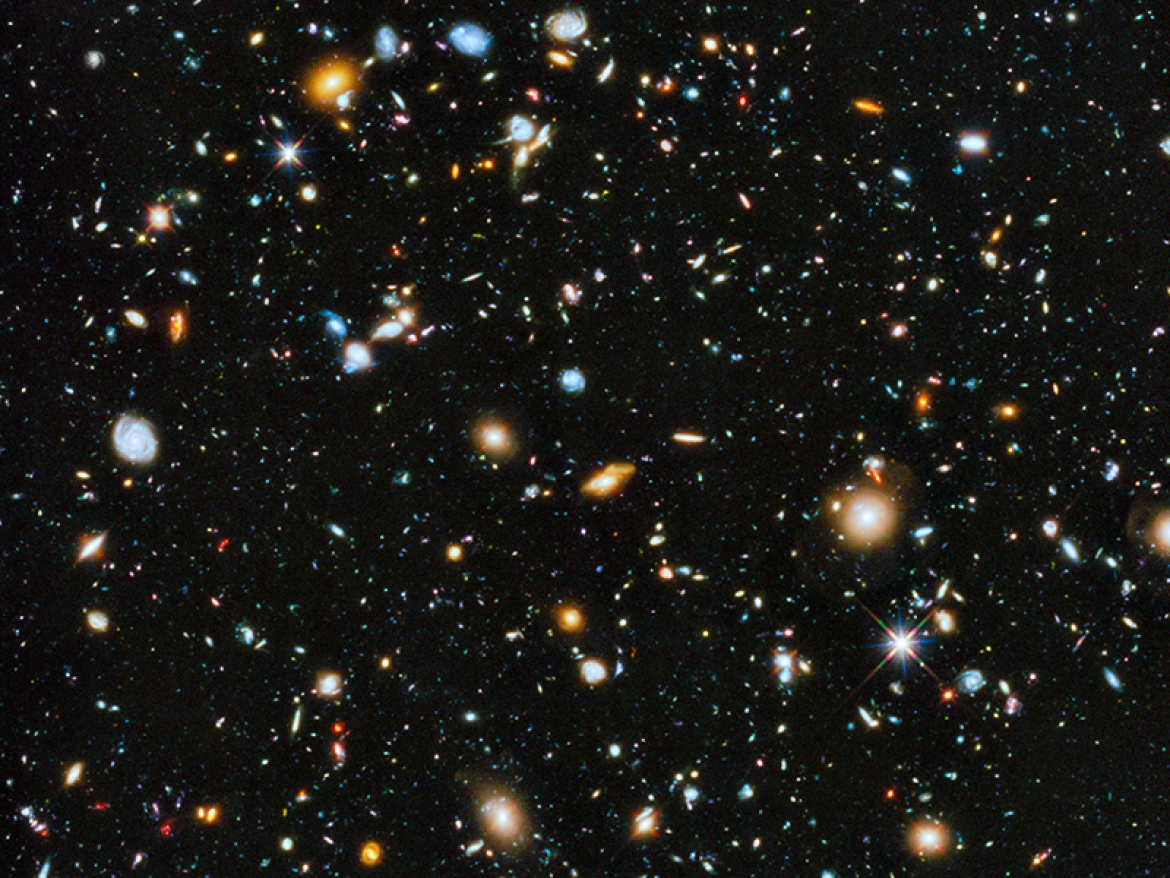A MaNGA view of how galaxies distribute in the mass-size plane
The universe houses hundreds of billions of galaxies with different color, sizes and morphologies. As seen in the Hubble Ultra-Deep Field (Figure 1): some galaxies appear to be red, nearly featureless and elliptical, while some have beautiful and blue spiral arms (spiral galaxies). Surprisingly these diverse galaxies follow simple global scaling relations. Recent work led by an PhD student, Hongyu Li (NAOC), Profs. Shude Mao (Tsinghua) and Michele Cappellari (Oxford) extended such scaling relations using spatially-resolved integral field unit data from MaNGA (Mapping Nearby Galaxies at Apache Point Observatory), one of the world-leading SDSS surveys. This study provides further constraints on how galaxies form and evolve.
In a recent study, a team led by a PhD student Hongyu Li (NAOC) and Profs. Shude Mao (Tsinghua) and Michele Cappellari (Oxford) analyzed the stellar populations and the mass distributions of ~2000 MaNGA galaxies. This is the largest spatially resolved kinematic sample analyzed so far in the world.
They examined galaxies in the three-dimensional space of mass, size and velocity dispersion (which is a measure of how hot a stellar system is). They found that these galaxies reside in a plane in this 3D space, and, for the first time, spiral galaxies were found to reside in the same plane as elliptical galaxies. When viewed edge-on, the plane is very thin. However, when viewed face-on, galaxies with different ages, metallicities and stellar mass-to-light ratios are located in different regions (metallicity is the fraction of mass in elements heavier than helium). Strikingly, their values vary systematically in the face-on view, roughly along the direction of increasing velocity dispersion (see Figure 2). This is consistent with a picture in which the bulge growth makes the population more metal rich and increases the likelihood for the star formation to be quenched.

In addition to the global population properties of these galaxies, the study also examined the population gradients of galaxies as a function of radius. It was found that the metallicity gradient peaks around a velocity dispersion of 100km/s, which roughly corresponds to a galaxy mass of ∼30 billion times the mass of the Sun. As shown by previous studies, below this mass, no fully passive early-type galaxies can exist. This decrease of the metallicity gradient as a function of velocity indicates that early-type galaxies more massive than this critical mass may have more merger events in their formation histories, which flattens the metallicity gradient.
(By Hongyu Li & Shude Mao)
Link to the relevant publication:
Li, H. Y., Mao, S., Cappellari, M. et al., 2018, MNRAS, 476, 1765 https://arxiv.org/abs/1802.01819



